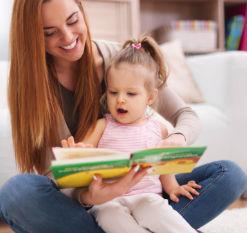Preschool is more than just an introduction to letters and numbers—it’s a vital stage in a child’s emotional development. During these early years, children begin to understand their feelings, build relationships, and develop important social habits. Teachers play a key role in guiding this emotional growth in ways that are both gentle and meaningful.
Creating a Safe and Nurturing Space
One of the first ways preschool teachers support emotional development is by creating a secure environment. When children feel safe and cared for, they are more open to expressing themselves. Teachers use calming routines, kind words, and consistent behavior to help students feel comfortable and respected. This emotional stability becomes the foundation for learning and growth.
Encouraging Expression of Feelings
Preschoolers are still learning how to recognize and name their emotions. Teachers gently guide children through this process using books, storytelling, music, and open conversations. They teach words like “happy,” “frustrated,” “proud,” or “nervous,” so that children can begin to express what they feel. This helps reduce outbursts and encourages healthy communication.
Modeling Positive Behavior
Young learners watch everything their teachers do. Preschool educators model how to respond to challenges with patience and empathy. Whether it’s taking turns during playtime or handling disappointment, teachers show children how to react calmly and respectfully. This modeling helps students develop emotional habits they carry into later years.
Fostering Social Skills
Emotional growth is closely tied to learning how to relate to others. Preschool teachers introduce activities that build cooperation, sharing, and listening skills. Group games, partner work, and collaborative storytelling are just a few ways children learn to connect. Teachers gently guide them through conflicts and praise efforts to work together.
Helping Children Build Confidence
Emotional growth also includes developing a positive self-image. Teachers support this by celebrating small successes and giving encouragement during new experiences. Simple affirmations like “You tried so hard!” or “I like how you helped your friend” boost self-esteem and help children feel proud of their efforts.
Partnering with Families
Emotional development doesn’t stop at the classroom door. Teachers communicate regularly with families to ensure that emotional growth continues at home. They share tips, observations, and activities that parents can use to reinforce positive behavior and emotional awareness.
Conclusion
The preschool years set the stage for a lifetime of emotional well-being. With care, patience, and understanding, teachers help young children build the emotional skills they need to thrive. By creating supportive classrooms and leading with compassion, preschool educators shape not only how children learn—but how they feel, connect, and grow.














